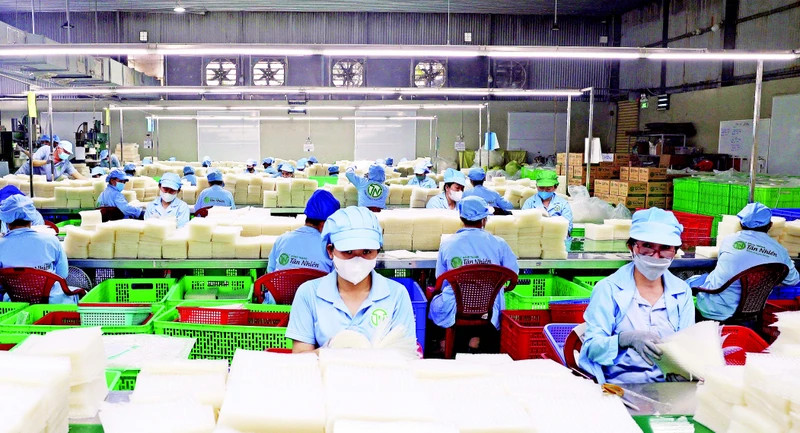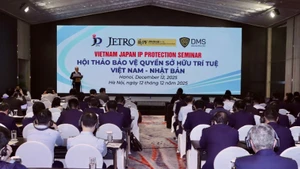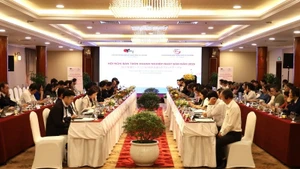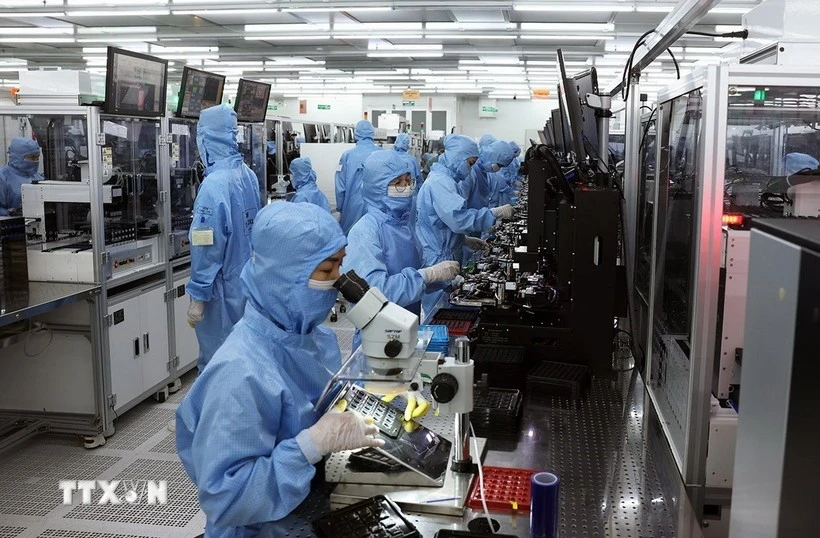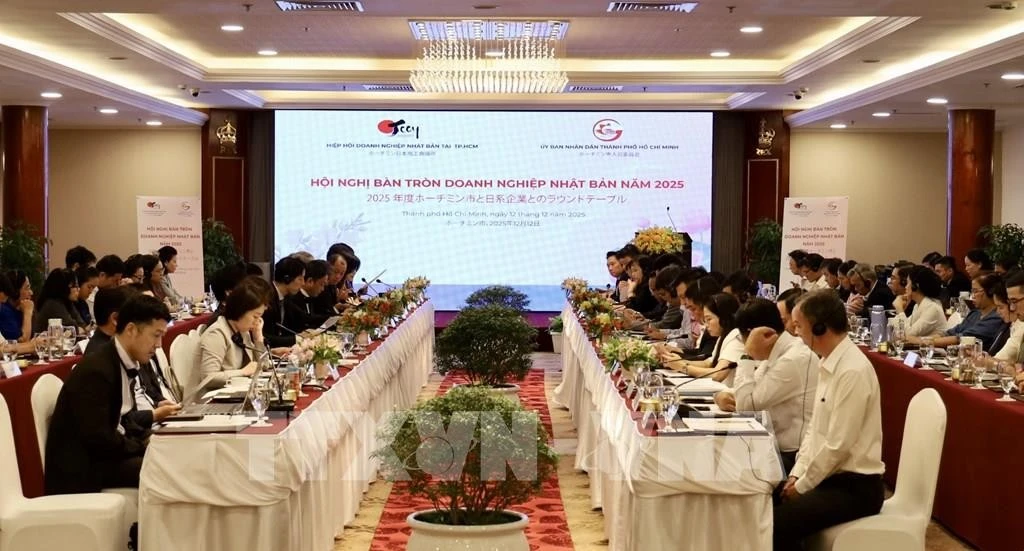To effectively realise this goal, from the very beginning of 2025, Long An and Tay Ninh have rolled out a series of coordinated acceleration measures, with investment attraction chosen by both as the launchpad for socio-economic growth.
Investment as a launchpad
In the first quarter of 2025, Long An Province began operation of the 826E Road and the Thai Tuan factory project, with a total investment of over 8.5 trillion VND (329.2 million USD), and commenced construction on the 822B Provincial Road in Duc Hoa District connecting with Duc Hue District, with an investment of 918 billion VND (35.55 million USD).
The province also launched a 220-ha urban area in Ben Luc District, with an investment of 16.98 trillion VND (657.63 million USD), and began work on the Hau Nghia–Duc Hoa new urban area, with an investment of over 1 billion USD.
In addition, Long An authorities started building 400 social housing units in the 500-ha integrated eco-industrial urban area (in Luong Hoa Commune, Ben Luc District), which will provide accommodation for over 1,000 residents and contribute to the province’s socio-economic development.
In Tay Ninh Province, to pave the way for achieving double-digit economic growth, the Tay Ninh Economic Zone Authority granted an investment certificate in late 2024 for the project on developing the infrastructure for Hiep Thanh Industrial Park (phase 1) to the Vietnam Rubber Group (VRG). The project spans over 495 ha and has a total investment of 2.35 trillion VND (91 million USD).
Truong Van Hung, head of the Tay Ninh Economic Zone Authority, emphasised that the project is anticipated to attract multi-sector investments, especially in high-tech industries, create jobs, and stabilise the local economy.
That project received investment policy approval within just 18 months is a result of VRG’s efforts and strong support from the departments and agencies of Tay Ninh Province. The project is expected to attract investment and generate jobs for residents in Go Dau, Ben Cau, and Trang Bang (Tay Ninh), and Duc Hoa and Duc Hue (Long An), while promoting socio-economic development in both provinces.
It also sets the stage for developing supporting industries, processing industries, high-tech industries, food and beverage production, logistics, and warehousing, thus contributing to environmental protection and climate change adaptation.
Currently, the launchpad for realising the double-digit growth target is making excellent progress. In the first quarter of 2025, Long An had 438 newly established enterprises with total registered capital of over 5.31 trillion VND (205.65 million USD); issued 15 new domestic investment certificates with newly registered capital exceeding 3.31 trillion VND (128.2 million USD); and approved 25 new foreign direct investment projects with total registered capital of 60.85 million USD.
With a total of 2,267 active domestic investment projects and 1,408 foreign investment projects (FDI), Long An is aiming to achieve a double-digit growth rate in 2025.
Determination to reach the finish line early
Nguyen Van Ut, Chairman of the Long An Provincial People’s Committee, stated that from a growth rate of 8.3% in 2024, Long An is aiming to achieve a 10–11% growth rate in 2025 and collect around 30 trillion VND (1.16 billion USD) in state budget revenue.
The province’s state budget revenue reached over 6.14 trillion VND (237.8 million USD) in the first quarter of 2025, equivalent to 25.56% of the target.
To capitalise on its 120.9-km border with Ho Chi Minh City, Long An has zoned 51 industrial parks and 72 industrial clusters, with 26 parks and 17 clusters ready for investment as of early 2025.
The province has also prepared over 10,000 ha of clean land approved by the government to meet the needs of investors in industry, urban development, commerce, services, and regional transportation infrastructure.
In addition, Long An is mobilising all societal resources to implement the government’s policy on developing social housing for workers and low-income earners. The target is to complete 22,500 housing units for 2025, and 48,750 units for 2026–2030 period.
Likewise, Tay Ninh is actively attracting investment into its industrial zones and clusters, and economic zones, with a focus on emerging sectors. It is closely connecting businesses to markets, facilitating access to planning, land, and investment information, promptly resolving challenges, and finding solutions for delayed projects to expedite implementation.
Nguyen Hong Thanh, Acting Chairman of the Tay Ninh Provincial People’s Committee, stated that to fulfil the 10% growth target and lay the foundation for a new development phase, Tay Ninh is reviewing and resolving outstanding issues, calling for investment to improve infrastructure, warehouses, and enhance operational quality to support import-export activities at border gates.
The province is also operationalising parking and vehicle gathering areas at ports; implementing warehouse and logistics development projects in some border economic zones; and finding appropriate solutions to overcome obstacles and accelerate the launch of major logistics centres, dry ports, and general ports.
The strategies and solutions proposed by Long An and Tay Ninh aim to accelerate growth, restructure the economy, innovate growth models, and improve productivity, quality, efficiency, and competitiveness. They also focus on enhancing investment attraction, administrative reform, improving the investment climate, disbursing public investment, and promoting science and technology.
